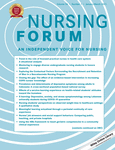Cultural alienation: A concept analysis
Abstract
Aim
To analyze the concept of cultural alienation
Background
Culturally diverse populations are increasing nationwide. However, many culturally diverse clients have experienced cultural alienation.
Design
Rodgerian's method of concept analysis
Data Source
Literature in CINAHL, PubMed, PsycINFO, JSTOR, Scopus, LGBT Life, and Oxford Bibliographic databases were searched. Inclusion criteria were full text, peer-reviewed, English language, and published within 5 years.
Review Methods
Articles were read in their entirety and reread to determine more contextual data. Antecedents, attributes, and consequences were extracted.
Results
Fifteen studies were included. Antecedents included: identification with racial, ethnic, sexual minority, disability, chronic illness, and threat to way of life. Attributes were traditional, different, negotiator, preserving, and sustaining. Consequences resulted in sociocultural deprivation, resistance, mistrust, distrust, loss of identity, and racism.
Conclusions
Nurses, health care providers, and communities can better support and engage their clients by working together to create an inclusive environment, in which exists a safe space to work, play, and heal. Findings highlight the need to examine one's own assumptions, inquire about the client's cultural care needs, tailor communication at the client's level, acknowledge individual strengths, provide empathetic support, and promote autonomy.
CONFLICT OF INTERESTS
The authors declare that there are no conflict of interests.




